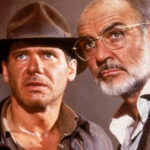

“Apple Inc.” is one of the most iconic and innovative companies in the world, but behind its revolutionary products and astounding success, there are fascinating stories and curiosities that many might not know. From the creation of the first personal computer, the Apple I, to the launch of emblematic devices like the iPhone and Apple Watch, the company has a history full of innovations and intriguing events.
In this text, we will explore some of the most intriguing curiosities about Apple, revealing lesser-known aspects that help us understand how the company has shaped technology and design in the 21st century.
1 – IT ALL STARTED IN A GARAGE
Apple was founded on April 1, 1976, by Steve Jobs, Steve Wozniak, and Ronald Wayne. The company’s starting point was a garage in Los Altos, California, with the initial goal of building personal computers. In the company’s structure, Steve Jobs took the lead in marketing strategies, while Steve Wozniak handled product engineering.
Ronald Wayne, who had a more modest role, chose to sell his stake in the company for $800 just a few days after its founding.
2 – HOW DID THE NAME “APPLE” COME ABOUT?
Although the name “Apple” is widely recognized today, its origin is surrounded by various stories and speculations. The name was chosen by Steve Jobs, and this has led to several theories about the reason behind the decision.
One of the most well-known explanations is that Jobs chose the name as a tribute to his passion for apples. At the time, he was following a restrictive diet and frequently ate apples, which may have influenced his choice. Another theory suggests that the name was inspired by the Beatles’ record label, Apple Records, as Jobs was a big fan of the band.
There is also a simpler theory that points to a visit Jobs made to an apple orchard, where he felt in a more peaceful and inspiring environment. Finally, Jobs mentioned in an interview that the choice was partly because he liked apples and also because “Apple” would appear before “Atari” in the phone book.
Additionally, the bitten apple logo generates curiosity. Some explanations include a reference to the “fruit of knowledge” or a pun with the slogan “Byte into an Apple” (a play on the word “bite”). Another reason was simply to avoid confusing the design with a tomato.
3 – THE COMPANY ALMOST NAMED ITSELF “EXECUTEX”
The origin of the name “Executex” in relation to the founding of Apple is somewhat mysterious and not widely publicized. However, there are indications that it was one of the names considered by Steve Jobs and Steve Wozniak before settling on “Apple”.
Reports suggest that Executex was proposed by a friend of Jobs, who believed the name had a strong, technological sound.
Initially, the company planned to focus on software and computer programs, and Executex seemed to reflect this well.
However, during the company formation process, Jobs and Wozniak shifted their focus to hardware production. Additionally, they realized that the name Executex could easily be confused with “Execute” or “Execute It”, which might lead to legal and branding complications in the future.
Given these considerations, the duo opted for the name “Apple”.
4 – THE FIRST COMPUTER
The “Apple I” was the first mass-produced personal computer by Apple Inc. Developed by Steve Wozniak and launched in 1976, the model was offered as a kit that required manual assembly of parts and soldering of components by the user. Compared to computers of the time, the “Apple I” represented a significant advancement, featuring a 1 MHz MOS Technology 6502 processor, 4 KB of RAM, and a motherboard that allowed for the connection of a keyboard and monitor.
Although only about 200 units were actually sold, the “Apple I” played a crucial role in establishing Apple as an innovative company in the tech sector. This pioneering model paved the way for the success of other Apple personal computers, such as the “Apple II” and the “Macintosh”.
Today, the “Apple I” is an extremely rare and valuable collector’s item. Only a few dozen original units remain, and they are highly sought after by technology enthusiasts and collectors.
5 – THE WORLD’S FIRST TRILLION-DOLLAR COMPANY
On August 2, 2018, Apple became the first U.S. company to reach a market value of $1 trillion. This value is determined by multiplying the company’s stock price by the total number of shares outstanding.
Apple’s growth to this milestone was driven by several factors, including the ongoing success of the iPhone, expansion into emerging markets such as China, and the launch of new products like the Apple Watch and HomePod.
However, Apple’s market value is quite volatile and can fluctuate based on various factors such as financial performance, changes in the global technology market, and competition from other companies. Since then, companies like Microsoft, Amazon, and Alphabet (Google’s parent company) have also reached the $1 trillion mark at different times.
6 – ADVERTISING IN THE SUPER BOWL
Apple’s iconic commercial broadcast during the 1984 Super Bowl became a landmark in advertising and marketing. It is often cited as an example of impactful and innovative advertising campaigns in pop culture.
Aired during Super Bowl XVIII on January 22, 1984, the commercial was created to promote the launch of the “Macintosh”, Apple’s first personal computer with a graphical user interface.
The 60-second ad, directed by Ridley Scott, depicted a woman running with a hammer to smash a giant TV screen symbolizing oppressive control, dubbed “Big Brother.” The commercial concluded with the slogan: “On January 24th, Apple Computer will introduce ‘Macintosh’. And you’ll see why 1984 won’t be like ‘1984’”.
Despite being aired only once on television, the commercial had a huge impact, generating widespread media discussion due to the Super Bowl’s massive audience. This success helped solidify Apple’s image as an innovative company and boosted Macintosh sales. Moreover, the commercial revolutionized TV advertising by incorporating cinematic production with special effects and an emotional narrative, elevating product presentation to a new level.
7 – THE SUCCESS OF THE IPHONE
The iPhone is Apple’s best-selling product in history. Launched in 2007, the iPhone has surpassed 2.4 billion units sold globally, establishing itself as the most popular and successful smartphone of all time.
This device marked a significant advancement in mobile technology, standing out for its innovative features like the multi-touch touchscreen, integrated camera, and internet access. Since its launch, Apple has continuously improved the iPhone line, incorporating new features such as facial recognition, wireless charging, and support for 5G networks.
Beyond its commercial success, the iPhone has had a profound impact on culture and society, transforming how people communicate, consume media, and carry out daily activities. The iPhone also played a crucial role in popularizing mobile apps, with many of the most influential apps being developed specifically for the iPhone and other Apple iOS devices.
8 – THE WORLD’S LARGEST OFFICE
Apple Park is Apple’s central campus located in Cupertino, California, and was inaugurated in 2017. Designed by the renowned architect Norman Foster, it is one of the largest office buildings in the world, with more than 260,000 square meters of usable space on a site covering over 70 hectares.
The campus features several innovative elements, such as the Steve Jobs Theater, an underground amphitheater where the company holds its major product presentations. Other attractions include a publicly accessible visitor center, a contemplation garden with fruit trees, and a large central pond. The main building has a curved glass facade that wraps around the entire structure, offering panoramic views and integrating the building with the natural landscape. This design was inspired by the Ritz-Carlton Hotel in New York, where Steve Jobs often stayed.
Apple Park was also designed with a focus on sustainability, incorporating eco-friendly technologies such as a 17-megawatt solar power system, geothermal heating and cooling, and a rainwater recovery system. With an estimated cost of approximately $5 billion, Apple Park is one of the most expensive corporate construction projects in history and houses over 12,000 Apple employees.
9 – WAS STEVE JOBS FIRED FROM APPLE?
Few people know, but Steve Jobs was fired from Apple in 1985.
After a conflict with then-CEO John Sculley, Jobs was forced to leave the company he had co-founded. This period was particularly challenging for Jobs, who faced a phase of depression and discouragement, and also for Apple, which went through a dark period.
During this time, Jobs continued working in technology, founding NeXT Computer, a company that produced advanced computers aimed at the enterprise market. NeXT also developed the NeXTSTEP operating system, which later became the foundation of macOS after Apple acquired NeXT in 1997.
Jobs returned to Apple in 1997, when the company was facing serious financial difficulties and struggling to stay competitive. Under his leadership, Apple underwent a profound restructuring and launched innovative products like the iPod, iPhone, and iPad, which became huge successes and helped the company become one of the most valuable in the world.
10 – THE DEATH OF STEVE JOBS
Steve Jobs, co-founder of Apple Inc., passed away on October 5, 2011, at the age of just 56, after a long battle with pancreatic cancer. His death was a significant milestone for both the technology sector and Apple. Jobs was known for his innovative vision and his ability to transform Apple into one of the most valuable and influential companies in the world.
In conclusion, Apple is not only one of the most innovative companies in the world but also a symbol of how technology can transform everyday life. Its commitment to design and user experience, combined with its ability to create integrated ecosystems, has helped set standards for the tech industry.
Moreover, Apple continues to explore new frontiers with investments in areas such as augmented reality and artificial intelligence.
With a passionate fan base and a brand that resonates with quality and innovation, the company is a cultural icon that continues to impact and inspire the world around it.








